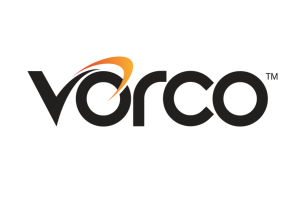Welcome to the Customer Engagement / Contact Centre / UC solutions pavilion. Below you will find leading vendors and/or their implementation partners in New Zealand. Click on any vendors of interest to see a showcase of their relevant local case studies, thought leadership articles, recent news stories, and product and industry insights. Use the advanced search facility in the menu bar to search for relevant content across the industries and solution types that you are researching. Also check the iStart event diary for local industry events. All vendors showcased have local representation and actively support clients in New Zealand, and so will be glad to assist with your enquiries.
SOLUTION PROVIDER DIRECTORY:
CUST. ENGAGEMENT/CONTACT CENTRE/UC OVERVIEW
Customer engagement
Customer service has always been an important focus for all businesses. But with the move to digital and mobile, customer expectations have soared and customer experience is now a critical measure of successful engagement.
Delivering a seamless, integrated experience regardless of the means a customer may choose to use is at the heart of successful customer engagement.
Point solutions for CRM, call centre or website forms have evolved to provide integration across all channels including phone, internet, e-mail, text, social and bricks & mortar.
Unified Communications
Unified Communications or UC describes the integration of multiple communication streams (voice, video & data) over an IP network onto one platform – e.g. a desktop, and also extends to integration with core business systems such as ERP or CRM solutions.
At the core of UC is Unified Messaging, whereby messages are streamed into a single inbox – be they sourced originally from fixed voice, mobile voice, e-mail, video, fax or instant messages.
UC extends unified messaging further by facilitating collaboration across business processes, so rather than simply a single inbox, participants in a process can collaborate on a problem and reach a decision faster than by traditional means. UC allows users to communicate with each other using the technology they have – so Video Conference participants can talk to one another via VC, but can also landline or mobile to include audio from those not connected to the VC.
“Presence” is a key concept in UC. Presence aware systems allow those within your network (business or personal) to be aware of your availability to be contacted. Are you at your desk, in a meeting, on the phone, on your mobile – or simply in a “do not disturb” moment? Your presence status means that you control your availability to be contacted, and people can see your availability. Phone tag is significantly reduced, particularly inside corporate network environments, and regardless of where you decide to leave a message, you know it will end up in the same queue – so there is no need to double up a voice message with an e-mail.
As an example of UC in action, consider the following scenario. A key customer has contacted the call centre and cancelled a large order that is in production. The call centre enters the issue into the CRM system with an alert to sales, production, inventory and shipping who all need to come up with a response plan. The presence aware messaging system will send an IM to everyone notifying them of the problem, and at the same time creates an online meeting space. As individuals come available they are able to join the space, and as they talk or chat online they can bring in whiteboard or videoconferencing feeds, ERP or CRM screens – or invite substitutes for those who are busy. The forum allows a collaborative decision to be reached as quickly as possible.
Unified Communication is in itself a subset of Unified Collaboration which is the “end game” in process collaboration across remotely located workers.
Conferencing
Conferencing is simply the bridging of communications between multiple parties over distance. Organisations are increasingly operating with staff or key partners in different locations, working from home, or travelling – so conferencing tools are now an integral part of allowing teams to collaborate across distance.
From its origins in teleconferencing that allowed more than two people to participate in a phone call, conferencing now extends across audio, video conferencing, web conferencing and webinars in the live (or “synchronous”) context, and can be extended to the asynschronous message boards, chat rooms, on-line forums and blogs. “Unified Conferencing” means that conferencing can operate seamlessly regardless of the end users technology – utilising Unified Communication.
With advances in network bandwidth and video data compression, IP-based video conferencing solutions have become a very real alternative to reduce the downtime from travelling to meet in person. A close look at the total cost involved with travelling, particularly for senior executives flying across international borders, means that high quality standards-based video conferencing is a very real option – particularly if the carbon credits associated with long haul air travel are accounted for.
VoIP / IP Telephony
IP Telephony allows voice traffic to be transported across an IP-based data network (hence “VoIP”), for example over your local area network (LAN) or the internet. The voice signal is sampled, compressed and encapsulated into data packets to allow it to be routed across the network.
When talking about IP Telephony, there are two parts to the story: IP Trunking and IP Extensions.
IP Trunking is where multi-site systems transport telephone calls over their wide area network. The phones at each end don’t necessarily have to be IP phones. IP Trunking is used to tie the two systems together. Voice effectively travels for free over the existing data network.
IP Extensions is where the desk phones or handsets are IP devices directly connected to the LAN instead of a phone socket (just like your computer). They can be multimedia softphones such as Net meeting, or alternatively IP telephones (IP Hardphone) which replicates a traditional telephone – or they can simply be as simple as your computer equipped with earphones and a mic.
VoIP should be considered by any organisation evaluating its telephony and communications infrastructure as it is an enabler to the many productivity enhancing unification and collaboration tools. Online forums, integrated email & voice messaging, and web conferencing are all examples of modes of communication which are available with the IP standard. Another consideration is that VoIP means that voice calls can be transported across data networks, rather than over telco networks – i.e. they can be carried for “free” – so toll charges are eliminated.
Session Initiated Protocol (SIP) is another network protocol that has provided for interoperability between voice, video and data devices, and with SIMPLE (SIP for Instant Messaging and Presence Leveraging Extensions) provides for presence aware messaging and conferencing over an IP network.
NEWS | ANALYSIS | RESEARCH

Orcon ends business residential distinction
WFH era brings reset for Vocus ISP…

Salesforce grabs Slack in US$27b deal
Is Salesforce + Slack a Microsoft killer?…

Offshored seats coming home
The tide is turning after lockdown hits top end of town…

650+ jobs on offer as Datacom opens new customer service hub
Datacom flies in face of economic downturn with Aussie expansion…

Guide to successful online events
(And the tech to support them…)

Zoom makes a splash with Otter transcription
Forget Disney backgrounds, here’s a Zoom feature we can really appreciate…

Zoom scrambles to recover security cred
Zoom adds security enhancements to cap off its no good, very bad month…

IBM Watson serving up Covid info
Dr Watson on call to take strain off overloaded help lines…

Companies dial up virtual contact centres
But there are challenges to navigate first…

Kiwis lag behind Aussies with 5G
Australia ranked as a ‘leader’ in 5G, New Zealand yet to allocate spectrum…

Where to now for 5G?
Definitely not cheaper and unlikely any more secure…

Forget the chatbots, ‘virtual assistants’ are taking over now
The psychological and technological come together in the race for CX AI supremacy…

Agility, the workplace of the future and UCaaS
As unified comms-as-a-service grows, it’s embracing all today’s key catch cries…

Fibre speed not a given
Tips to get the most out of your fibre connection…

Productisation eases access to big data
Qonnect provides platform to make big data easier to qonsume…

Chatbots a ‘game changer’ for healthcare, banking
Juniper Research says traditional call centres are under threat…

Genesys bids for Interactive Intelligence
Consolidation drives through contact centre sector…

The six challenges of multi-channel contact centres (and how to beat them)
Contact centre operators have been shifting to multi-channel communication methods for more than a decade, writes Carl Price – but the shift has proven challenging…

Five trends which will revolutionise customer experience
Interactive Intelligence shares its predictions for the five trends set to disrupt customer service…

Smaller contact centres lured with A$99 cloud
Interactive Intelligence dangles Amazon Web Services-hosted cloud platform…

How live video can boost contact centre performance
Enterprise video taken in a new direction as LogMeIn makes use of your smartphone…

Verint checks callers on black and white list
CRM customer support and service provider Verint is launching an upgraded platform that can identify callers from their voice alone, and analyse what they are saying and their emotions on the fly…

Cloud-based UC to drive growth in NZ unified comms market
Frost and Sullivan’s latest UC report shows Cisco and Microsoft dominate a two-tiered UC market in New Zealand but cloud-based solutions are challenging the status quo…

WXC Communications wins AMI Insurance business
The communications vendor leverages positive track record at parent company IAG to win more business at its subsidiary…

2013 iStart ICT Investment Intentions Survey
Mobilising management is the key objective of IT investment plans for 2013 says iStart’s annual investment survey. The mid-market is investing in mobile business intelligence while small business is doing more with less in the cloud.

Why businesses are slow to take up video-conferencing
The cost of infrastructure has slowed the adoption of video-conferencing…

Unified communications comes of age
Three years ago iStart prophesised that unified communications was going to be the next big thing. But three years, in the days before BYOD and when the cloud was in its infancy, is a long time ago. So where are we now?…

WorldxChange gets serious about growth plans with new COO
WorldxChange, the first telco company in New Zealand to implement an exclusively run IP network, has hired industry veteran Tim Smith as Chief Operating Officer, a real coup for the business as it ramps up its growth plans…
Management buyout sees WxC eyeing up big business
A management buyout has given WorldxChange (WxC) a seal of approval for continuing its successful Corporate and Government SIP services. With six key managers taking a stake holding position, the company is now pushing even harder to challenge giants Telecom and Telstra…

CallPlus’ new product connects with small business
CallPlus’ new voice solution aims to give big player options to small businesses…
.





























